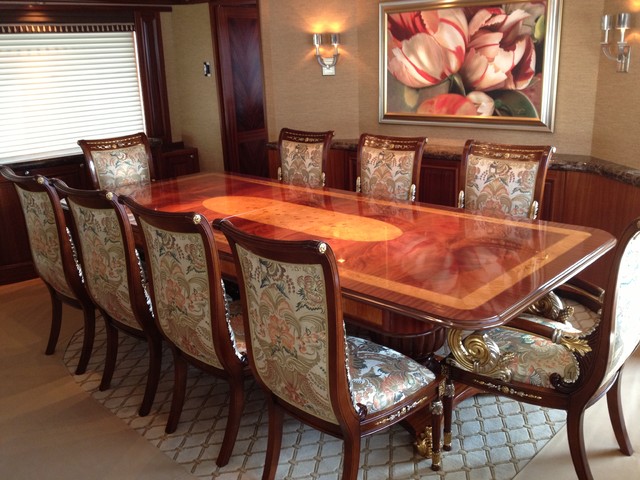Stylin
Pair
Anybody ever play with inlay? I want to make a really high end looking table topper and do some nice inlay work. I'm thinking something like these pictures I found on google.


I'm guessing the only way to do this is to start with a full sheet of hardwood ply and route out what I want inlayed in that. Then if I want a hardwood boarder around the edge and the grains to line up I'd actually have to route that out of a full sheet as well? Seems like a ton of waste and I'm wondering if theres a better way. Also, can you buy 1/8" think 4x8 exotic woods to inlay with? I don't think I'd want to work with anything thiner. This is sounding really expensive ..


I'm guessing the only way to do this is to start with a full sheet of hardwood ply and route out what I want inlayed in that. Then if I want a hardwood boarder around the edge and the grains to line up I'd actually have to route that out of a full sheet as well? Seems like a ton of waste and I'm wondering if theres a better way. Also, can you buy 1/8" think 4x8 exotic woods to inlay with? I don't think I'd want to work with anything thiner. This is sounding really expensive ..
